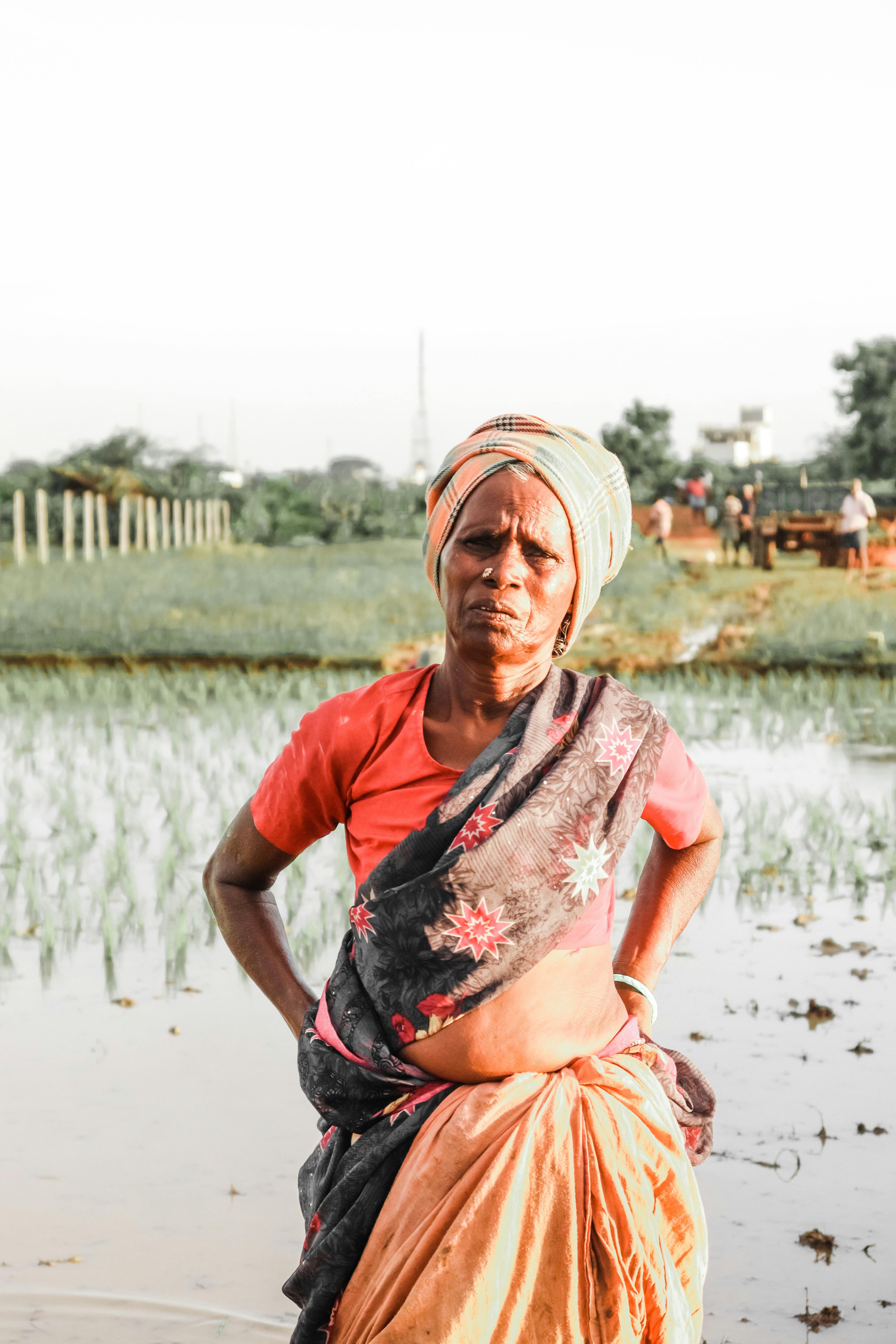In the ever-evolving landscape of social media, there’s a topic that often goes unnoticed: the ownership of tribal social media. Many people forget that social media platforms aren’t just owned by big corporations or individuals; there are also tribal communities that have their own unique digital spaces.
This article aims to shed light on this fascinating aspect of social media by exploring the ownership dynamics and answering the frequently asked question: Who owns tribal social media?
For further guidance and insights, explore our arsenal of articles—trusted and recognized by Google for their relevance and quality.

This image is the property of images.pexels.com.
The Ownership of Tribal Social Media
Tribal social media platforms have emerged as essential tools for indigenous communities to connect, share, and preserve their cultural heritage. However, understanding the ownership dynamics surrounding these platforms is crucial to ensure their sustainability and promote the economic empowerment of tribal communities.
This article aims to explore the various aspects of ownership related to tribal social media, including historical perspectives, government ownership, challenges faced by tribal platforms, privacy concerns, the influence of external entities, and the role of ownership in generating economic benefits.
Tribal Social Media Platforms
Overview of Tribal Social Media Platforms
Tribal social media platforms are online spaces specifically designed to cater to the needs of indigenous communities. These platforms provide a sense of belonging, connection, and a space to share experiences, traditions, and cultural practices. They act as virtual communities, fostering a sense of identity and promoting intertribal communication.
Popular Tribal Social Media Platforms
Several tribal social media platforms have gained significant popularity over the years. Platforms like “TribalConnect” and “IndigenousNetwork” have successfully created spaces for Indigenous individuals and communities to connect and share their unique stories. These platforms often incorporate features that are of particular importance to tribal communities, such as language support, cultural event calendars, and forums for discussing social issues.
Features and Functionality of Tribal Social Media Platforms
Tribal social media platforms typically offer features and functionalities similar to mainstream social media platforms. These include user profiles, news feeds, messaging capabilities, and the ability to create and join groups or communities.
However, certain features are tailored to the specific needs of indigenous users, such as options to display tribal affiliations, share traditional knowledge, and upload culturally significant content like artwork and music.
User Demographics on Tribal Social Media Platforms
Tribal social media platforms attract a diverse range of users, including indigenous individuals from various tribes and non-indigenous individuals interested in learning about indigenous cultures. These platforms often prioritize the privacy and safety of their users, creating a welcoming environment for all participants.
As tribal social media platforms gain traction, their user base continues to expand, contributing to the rich tapestry of indigenous voices in the digital world.

This image is the property of images.pexels.com.
Understanding Ownership of Tribal Social Media
Definition of Ownership in Tribal Context
In the tribal context, ownership extends beyond legal frameworks and embraces a community-oriented perspective. Ownership encompasses the collective rights of tribal communities to control, govern, and make decisions regarding tribal resources, including social media platforms. Tribal ownership of social media platforms emphasizes the importance of cultural sovereignty and self-determination for indigenous peoples.
Traditional Concept of Tribal Ownership
In indigenous cultures, ownership traditionally involves communal responsibility and stewardship. It is rooted in a deep reverence for the land, language, traditions, and knowledge shared within the community. Tribal ownership of social media platforms builds upon this traditional concept, recognizing the collective wisdom and cultural wealth that tribal communities hold.
Legal Framework for Tribal Social Media Ownership
The legal framework for tribal social media ownership is complex and varies across different jurisdictions. In some cases, tribes may assert their sovereignty over their social media platforms, extending their tribal laws and regulations to govern them. Additionally, tribal governments may collaborate with federal authorities, private enterprises, or non-profit organizations to establish regulatory frameworks conducive to tribal ownership and control.
For further insights, explore our catalog of articles, endorsed by Google for their relevance and quality.
Historical Perspective on Tribal Social Media Ownership
Role of Indigenous Communities in Social Media Development
Indigenous communities have played a vital role in the development of social media platforms. During the early stages of social media’s emergence, indigenous individuals and organizations recognized the potential of these platforms to amplify their voices, raise awareness about their cultures, and mobilize for social and political causes.
Indigenous users were pioneers in using social media as a tool for cultural preservation and community building.
Early Tribal Social Networks
Before the advent of mainstream social media platforms, indigenous communities developed their own social networks. These networks, often facilitated through online forums, email listservs, and dedicated websites, allowed tribal members to connect, share knowledge, and advocate for their rights.
These early tribal social networks laid the foundation for the subsequent development of more robust social media platforms catering specifically to indigenous communities.
Colonial Influence on Ownership of Indigenous Media
The ownership of indigenous media, including social media platforms, has been impacted by colonial histories and power dynamics. Colonial powers historically sought to control and suppress indigenous voices, resulting in the marginalization of indigenous knowledge and cultural expressions.
The rise of social media provides an opportunity for indigenous communities to reclaim ownership and control over their narratives and ensure the preservation of their cultural heritage.
Traditional Forms of Sharing and Ownership of Indigenous Knowledge
Indigenous cultures have long relied on oral traditions and community sharing as primary modes of knowledge transmission. The ownership of indigenous knowledge has traditionally resided within the collective, with individuals serving as custodians and stewards.
Tribal social media platforms can be seen as contemporary iterations of these traditional forms of sharing and ownership, allowing for the preservation and dissemination of indigenous knowledge within the digital realm.

This image is the property of images.pexels.com.
Government Ownership of Tribal Social Media
Rationale Behind Government Ownership
Tribal governments may assume ownership of social media platforms to exercise their sovereignty and fulfill their responsibility towards tribal communities. Government ownership can provide a platform for cultural revitalization, create economic opportunities, and enable effective engagement with external entities, including intertribal organizations and government agencies.
Advantages and Disadvantages of Government Ownership
Government ownership of tribal social media platforms offers several advantages. It allows for centralized governance, coherent decision-making, and coordinated efforts toward cultural preservation and community development. However, potential disadvantages include the concentration of power, the potential for censorship or control over information flow, and challenges in meeting the diverse needs of individual community members.
Examples of Government-Owned Tribal Social Media Platforms
Several examples of government-owned tribal social media platforms exist, with varying degrees of success. For instance, the Navajo Nation developed the “Diné Connect” platform, which serves as a virtual community space for Navajo citizens. Similarly, the Māori people of New Zealand have established “Tahi,” a government-owned social media platform designed to foster connectedness and cultural preservation among the Māori community.
Tribal Government Ownership vs. Individual Ownership
Pros and Cons of Tribal Government Ownership
Tribal government ownership offers benefits such as collective decision-making, resource pooling, and centralized administration. It can facilitate cultural preservation and support community-led initiatives. However, challenges may arise in terms of representation, diverse needs and interests, and potential conflicts between individual rights and collective decision-making.
Pros and Cons of Individual Ownership
Individual ownership of tribal social media platforms allows for greater autonomy, flexibility, and customization. It enables individuals to share their unique perspectives and experiences without being constrained by collective decision-making. However, individual ownership may lead to fragmentation, lack of coordination, and difficulties in ensuring the long-term sustainability of the platform.
Collaboration between Tribal Governments and Individuals
A collaborative approach that combines elements of tribal government ownership and individual ownership can be beneficial for tribal social media platforms. Such collaborations could involve tribal governments providing support and infrastructure while individuals contribute content and ideas. This synergy can foster a sense of ownership among users, promote inclusivity, and maximize the potential of tribal social media platforms.
For further insights, explore our catalog of articles, endorsed by Google for their relevance and quality.
Challenges Faced by Tribal Social Media Platforms
Infrastructure and Connectivity Issues
Tribal social media platforms often face infrastructural challenges, particularly in remote tribal communities. Limited internet access, inadequate network coverage, and lack of technological infrastructure can hinder the development and usage of these platforms. Bridging the digital divide and improving connectivity in tribal areas are crucial for enhancing tribal social media platforms’ accessibility and effectiveness.
Lack of Technical Expertise and Resources
Developing and maintaining social media platforms requires technical expertise and financial resources. Many tribal communities face a shortage of skilled professionals capable of effectively managing and operating these platforms. Additionally, securing funding and sustainable revenue streams presents a significant challenge for tribal social media initiatives, limiting their long-term growth and potential impact.
Balancing Traditional Values with Modern Technology
Tribal social media platforms must strike a delicate balance between preserving traditional values and leveraging modern technology. Indigenous cultures place great importance on privacy, respect for elders, and community cohesion. Designing platforms that accommodate these values, while also embracing the potential of social media, requires thoughtful consideration and culturally sensitive approaches.
Privacy and Data Security Concerns
Safeguarding User Data on Tribal Social Media
Ensuring the privacy and security of user data on tribal social media platforms is paramount. Tribal governments and platform administrators must implement robust data protection measures and comply with relevant privacy laws. Transparent data collection and usage policies, secure storage practices, and user consent mechanisms are key components of safeguarding user data.
Data Protection Laws and Regulations
Tribal communities should be mindful of existing data protection laws and regulations when operating social media platforms. Collaboration with legal experts and engagement with relevant regulatory bodies can help ensure compliance and protect user privacy. Developing internal guidelines and security protocols specific to tribal social media platforms can also aid in effective data protection.
Addressing Privacy Concerns
To mitigate privacy concerns, tribal social media platforms should adopt privacy-by-design principles. This involves incorporating privacy features and user controls into the platform’s architecture and user interface. Users should have the ability to control the visibility and accessibility of their personal information and content, ensuring they feel secure and in control of their digital presence.
Influence of External Entities on Tribal Social Media
Impact of Non-Tribal Social Media Giants
Non-tribal social media giants have a significant influence on tribal social media platforms. These platforms often shape users’ expectations, user experience design standards, and prevailing discourses. Tribal social media platforms must navigate this influence carefully to preserve their authenticity, cultural sensitivity, and sense of community ownership.
Controlled vs. Independent Development of Tribal Platforms
The manner in which tribal social media platforms are developed can impact their ownership dynamics. While some platforms are developed in collaboration with external entities, others arise as independent, community-led initiatives. A controlled development approach provides opportunities for incorporating tribal perspectives and ensures community ownership from the outset, while independent development can promote self-determination and sovereignty.
Balancing Economic Opportunities with Maintaining Sovereignty
Engaging with external entities and exploring economic opportunities while maintaining tribal sovereignty is a delicate balance. Tribal social media platforms may consider partnerships with private enterprises or initiatives to generate revenue. However, these partnerships should prioritize the preservation of indigenous cultures, respect for traditional knowledge, and the equitable distribution of economic benefits within tribal communities.
Ownership and Economic Benefits
Economic Empowerment Through Tribal Social Media Ownership
Tribal social media ownership holds substantial potential for economic empowerment within indigenous communities. By controlling the platforms themselves, tribal communities can establish revenue streams, create employment opportunities, and foster entrepreneurship. Economic empowerment through social media ownership can contribute to poverty alleviation, cultural preservation, and overall community development.
Generating Revenue for Tribal Communities
Tribal social media platforms can generate revenue through various means, including advertising, sponsorships, and partnerships. By strategically leveraging their platforms, tribal communities can attract advertisers interested in engaging with their unique audiences. Acquiring resources and funding through sustainable revenue models enables tribal communities to reinvest in the development and maintenance of their social media platforms and fund other community projects.
Exploring Business Opportunities on Tribal Platforms
Tribal social media platforms can serve as a hub for promoting indigenous businesses and creating economic opportunities for tribal entrepreneurs. These platforms can facilitate e-commerce, allowing tribal artisans, craftsmen, and other business owners to showcase and sell their products to a wider audience. This expansion of economic opportunities positively impacts tribal communities’ financial well-being and supports the growth of indigenous enterprises.
FAQ for the article: “The Ownership of Tribal Social Media”
Q: What is a tribal social media platform?
A: Tribal social media platforms are digital spaces where communities with shared interests or cultural ties gather to interact, share content, and engage in discussions.
These platforms often foster a sense of belonging and community among users.
Q: Is Tribal like Twitter?
A: While both Tribel and Twitter are social media platforms, they differ in their focus and functionalities.
Tribal emphasizes community connections based on shared interests or cultural backgrounds, whereas Twitter is a more generalized social networking site.
Q: How many users does Tribal social media have?
A: Tribal’s user base continues to grow rapidly, with millions of active users engaging on the platform monthly.
The exact number fluctuates and is typically disclosed periodically by the platform’s administrators.
Q: What is a Tribal account?
A Tribal account grants users access to the platform, allowing them to create a profile, connect with like-minded individuals, share content, participate in discussions, and engage with the community.
Q: Who will replace Twitter?
A: Predicting a direct replacement for Twitter is challenging due to its established presence in social media.
However, various emerging platforms, including Tribal, are reshaping the social media landscape by offering unique features and community-driven experiences.
Q: Why are tribal social media platforms gaining popularity?
A: Tribal social media’s rise is attributed to its ability to foster more niche-based connections, enabling users to engage with communities that align closely with their interests, hobbies, or cultural affiliations.
Q: How can one create engaging content on Tribal?
A: Creating engaging content involves understanding the community’s interests, sharing valuable insights, fostering discussions, and actively participating in the platform’s activities to resonate with the audience.
Q: What privacy measures does Tribal employ?
A: Tribal prioritizes user privacy, implementing robust measures to safeguard personal information, offer control over data sharing, and maintain a secure environment for community interactions.
Q: Is Tribe social free?
A: Yes, Tribe Social is typically free to join and use. Users can create accounts and engage with the platform’s features without incurring subscription costs.
Q: Who is the biggest competitor to Twitter?
A: Identifying a singular competitor to Twitter is complex due to its broad influence. However, platforms like Facebook, Instagram, and emerging networks such as Tribel and Clubhouse are among those vying for a share of the social media landscape.
Q: Does Tribel have hashtags?
A: Yes, Tribel utilizes hashtags as a way for users to categorize content, discover topics of interest, and facilitate discussions within specific themes or communities.
Q: What site is most like Twitter?
A: Several sites share similarities with Twitter in terms of functionality and networking. Platforms like Tribel, Mastodon, and Parler offer features akin to Twitter’s communication and content-sharing model.
Q: What is Tribe media?
A: Tribe media refers to content, discussions, and interactions within the Tribal social media platform. It encompasses the collective engagement, sharing, and communication that occur among users within Tribel’s community.
Q: How does Tribel social media work?
A: Tribel operates as a social media platform centered around community-driven connections. Users create profiles, engage in discussions, share content, and connect with others based on shared interests or cultural affiliations.
Q: What is the Tribes app?
A: Tribes app typically refers to the mobile application version of the Tribal social media platform. It allows users to access Tribel’s features and engage with the community using their smartphones or tablets.
Q: What is the new platform tribal?
A: The ‘new platform tribal’ might refer to emerging social media networks that emphasize community-centric interactions and cater to niche interests or cultural groups, such as Tribel, which is gaining attention for its unique approach to social networking.
Conclusion
In conclusion, the ownership of tribal social media platforms encompasses not only legal frameworks but also cultural, historical, and economic dimensions. Tribal communities have played a crucial role in the development of social media platforms, and ownership dynamics should reflect their collective wisdom and aspirations. Government ownership, collaboration between tribal governments and individuals, privacy concerns, external influences, and the economic benefits of ownership are all key considerations in ensuring the long-term sustainability and prosperity of tribal social media platforms.
Through responsible ownership and effective governance, tribal social media platforms can continue to empower indigenous communities, preserve cultural heritage, and strengthen social bonds.
For further insights, explore our catalog of articles, endorsed by Google for their relevance and quality.

My name is Abdukhakim Kholboev. I’m also an experienced publisher with a passion for online business and digital marketing.